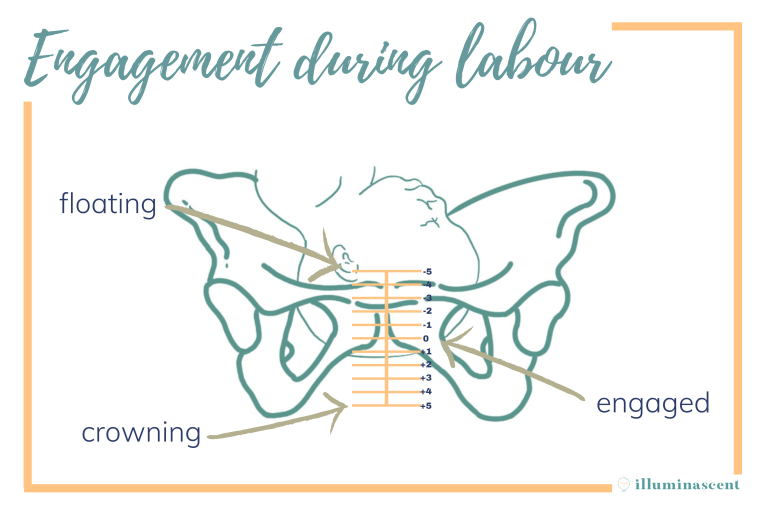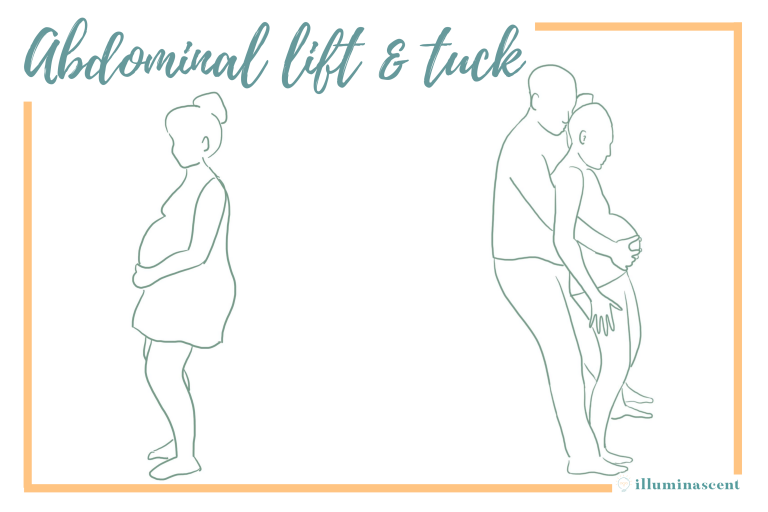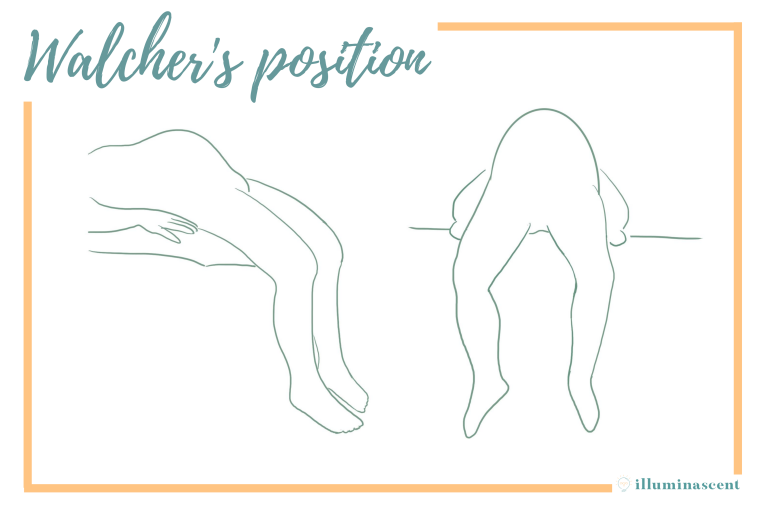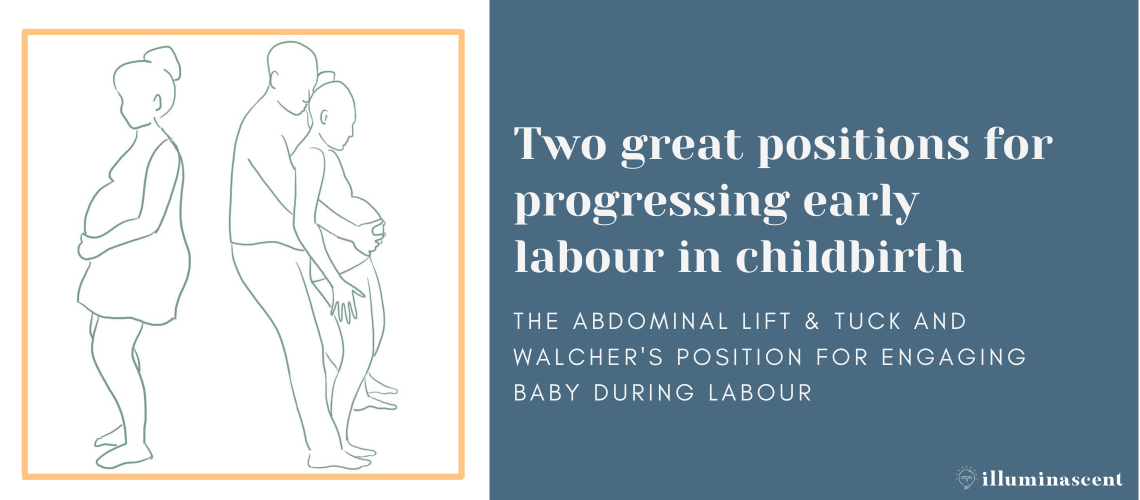Throughout pregnancy, when it comes to baby’s position, there tends to be just one question – is it head down?
And while that is obviously key information, it is just the first question. How baby is positioned and moves through the pelvis in labour is crucial to a labour that progresses well.
A baby in an ‘ideal’ position can mean a shorter, easier, less painful labour.
And who doesn’t want that?
Recently I had the absolute PLEASURE of being present for my sister’s VBAC homebirth (often coined an HBAC).
What. a. gift.
In prep for her birth, I spent a lot of time on Spinning Babies – a website and incredible resource that I’ve been reading since I was pregnant with my first in 2013. I urge you to check it out here – there are things you can be doing daily in pregnancy to help get baby in a more optimal position.
Before my sister’s labour really got going, she spent about 24 hours in pre- or early labour, where contractions were present and irregular in the background.
At some point I sent her a Spinning Babies link to a technique called the Walcher’s Position. It reminded her of another technique, the Abdominal Lift and Tuck – a move she then tried and felt really helped get labour going more intensely and regularly.
And while I would love to talk endlessly about what happened next during that lovely homebirth, today we’ll be talking about those two labour positions and how they may be helpful in labour.
Engagement in Labour
Engagement is when baby’s head enters the pelvis.

In first-time pregnancies, babies usually engage before labour begins – though this is by no means a universal truth.
This isn’t something that has been researched for a long time, but a study of 422 people in 1975 found the following regarding head engagement in those pregnant for the first time.
The percentage of people with fetal head engagement by time:1
- By 37 weeks 6 days: 23%
- 38 – 38 weeks 6 days: 50%
- 39 – 39 weeks 6 days: 65%
Regardless, in subsequent labours, when things are a bit roomier, baby may not engage until right before labour or during early contractions.
The below techniques are for when contractions don’t seem to be moving baby down into the pelvis.
Abdominal Lift and Tuck
When labour is not quite moving along, the Abdominal Lift and Tuck (ALT) can be a very effective move in early labour to help get baby to engage into the pelvis, if baby is still a bit higher in the pelvis (-3 or -2 station).

It’s also a great technique to relieve back labour by helping baby get in a better position.
I’m a firm believer in listening to your body in labour and following its lead. If labour is progressing, just continue to listen to your body – no need for this technique.
But in instances where baby is hanging up high in the pelvis and not engaging, or labour is starting/stopping or not picking up (my sister, for example, had somewhat regular contractions for 24 hours before trying this), this move may help.
This is move done throughout a contraction, for 10 contractions in a row.
- Stand, it may be helpful to do so against a wall
- Slightly bend your knees
- Interlock your fingers, put them below your belly
- As your contraction starts, lift your belly up about 2”, it should be comfortable
- While lifting your belly, flatten your lower back – this is why being against a wall can be helpful, you can more easily judge when your back is flat (remember, those knees should be slightly bent)
- Throughout your entire contraction, hold your belly up
- Feel free to gently sway or rock
- A partner can also stand behind you to help hold your belly up and keep your lower back flat
- At the end of your contraction, lean forward and slowly release your abdomen
- Repeat for 10 contractions

Once my sister completed these lifts, labour kicked up a bit with stronger more consistent contractions.
For more great information, including anecdotes of where this move was successfully used, visit the Spinning Babies page on the Abdominal Lift and Tuck.
In cases where the Abdominal Lift and Tuck doesn’t do quite enough, following 10 contractions of the ALTs, you can also try the Walcher’s Position.
Walcher's Position
Much like the Abdominal Lift and Tuck, the Walcher’s Position will also help to get a baby high in the pelvis to engage.
Thing is, it’s a lot more uncomfortable than the ALTs.
That said, you only need to use this through/between 3 contractions in a row.
According to a 1912 article in the Lancet, the Walcher’s Position was first described and illustrated in ‘La Comare’ which was published in 1596.
Isn’t that incredible?
It wasn’t called the Walcher’s Position until the German obstetrician described the move to obstetricians around 1882 and it was subsequently written about in 1897 by another physician, who gave Walcher credit for the position.
Check out its original depiction from 1596 (this picture is not exactly the Walcher’s we know today – and it’s not as scary as it’s been depicted here, promise).
It was also discussed in 1882 – which prompted Dr. Walcher to write about it (and subsequently gain credit for the position).


Anyways, this position was, and is, used when baby can’t engage once labour begins. This unique position creates a wide arch and opens up the pelvis – moving the pubic bone away from the spine, making more room so baby’s head can enter the pelvis.
Use this when strong, frequent contractions aren’t helping baby engage. According to Spinning Babies, baby is likely to be posterior (meaning baby’s back is not against the belly but against the back), and/or have its chin lifted (not tucked). In some cases the front-to-back opening of the pelvis may be a bit narrow as well.
Use this position for 3 contractions, with no break in between contractions:
- Lie on high firm bed (edge of bed is at the bottom of your butt)
- Let legs hang – the weight of legs helps pull pelvis open
- Can put rolled towel or yoga mat under small of back for comfort
- At home in absence of high bed (or ‘high’ alternative that could work):
- Put a firm 15” roll (could use a blanket or oversized towel) on the floor, placed under butt
For more great information, including anecdotes of where this move was successfully used, and to see helpful pictures, visit the Walcher’s Position page on Spinning Babies.

What’s the take-home message?
- When early labour isn’t progressing regularly, and baby remains high in the pelvis, these moves may help get baby in a more optimal position and engaged in the pelvis
References: 1. Weekes AR, Flynn MJ. Engagement of the fetal head in primigravidae and its relationship to duration of gestation and time of onset of labour. Br J Obstet Gynaecol. 1975;82(1):7-11; 2. Mercurio, G. La Comare. 1596. Accessed August 13, 2020: https://core.ac.uk/download/pdf/76469116.pdf; 3. Dickinson RL. Am J Obs Women & Child. 1899 V-39. Accessed August 13, 2020: https://history-of-obgyn.com/uploads/3/5/3/8/3538227/1899-dickinson-walcher-rev-feb2015.pdf

